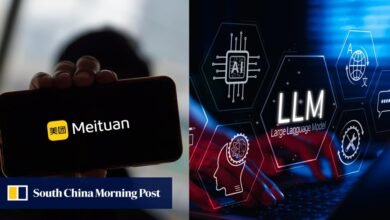OpenAI Launches Open-Source GPT Models: GPT-OSS-120B & GPT-OSS-20B

▼ Summary
– OpenAI released two new open-source LLMs, gpt-oss-120b (120B parameters) and gpt-oss-20b (20B parameters), both text-only and free for commercial use under Apache 2.0.
– The models outperform some of OpenAI’s paid models in benchmarks and can run locally, ensuring privacy, but require text-only inputs and lack multimodal capabilities.
– OpenAI aims to compete with free open-source rivals like DeepSeek and Mistral, hoping to attract users back to its ecosystem despite no direct revenue from these models.
– The models support multilingual tasks, tool integration (e.g., web search), and enterprise customization, with safety measures like adversarial testing and refusal behavior for harmful prompts.
– OpenAI’s move into open-source reflects market pressure from global competitors, but its business strategy remains unclear as paid models drive most revenue.
OpenAI has unveiled two groundbreaking open-source language models, marking a strategic shift back to its roots while maintaining its position in the competitive AI landscape. The newly released GPT-OSS-120B and GPT-OSS-20B offer powerful text-based capabilities, with the larger model boasting 120 billion parameters and the smaller one designed for local use on consumer hardware. Both models outperform several paid alternatives in reasoning and problem-solving benchmarks, making them attractive for enterprises and independent developers alike.
What sets these models apart is their permissive Apache 2.0 license, allowing unrestricted commercial use, modification, and local deployment without reliance on cloud infrastructure. This makes them ideal for industries with strict data privacy requirements, such as finance, healthcare, and government. Unlike OpenAI’s proprietary offerings, these models ensure sensitive data never leaves a user’s own systems—unless connected to external tools like web search, which reintroduces some privacy considerations.
Performance-wise, GPT-OSS-120B rivals OpenAI’s proprietary o4-mini model in tasks like advanced mathematics, multilingual processing, and health-related evaluations. The smaller GPT-OSS-20B even surpasses the o3-mini in certain benchmarks, proving that open-source doesn’t mean compromised capability. Developers can fine-tune these models for specialized applications, as demonstrated by OpenAI’s collaboration with the Swedish government to optimize performance for regional language nuances.
The move comes amid growing competition from open-source alternatives, particularly from Chinese developers like DeepSeek and Alibaba, whose models have gained traction for their efficiency and lack of restrictive licensing. By re-entering the open-source arena, OpenAI aims to reclaim developer mindshare and position itself as a one-stop AI provider, offering everything from proprietary chatbots to customizable open models.
Despite the lack of direct revenue from these releases, OpenAI benefits by keeping users within its ecosystem. The company is reportedly exploring monetization through consulting services, helping enterprises deploy and fine-tune models—a strategy reminiscent of Palantir’s hands-on approach.
Safety remains a priority, with OpenAI implementing rigorous adversarial testing to mitigate risks in sensitive areas like biosecurity and cyber threats. Independent audits confirmed that even fine-tuned versions of GPT-OSS-120B stayed below high-risk thresholds, paving the way for public release.
Available now on Hugging Face and GitHub, these models come with extensive hardware and platform support, including optimizations for NVIDIA, AMD, and Microsoft’s ONNX Runtime. A $500,000 Kaggle challenge further incentivizes researchers to probe the models’ limits, fostering broader safety innovation.
The big question is whether OpenAI can balance open-source contributions with its lucrative proprietary business. With powerful free alternatives proliferating, the company must convince users that its paid services—like multimodal AI and seamless API integration—justify the cost. For now, enterprises and developers gain a compelling new option: cutting-edge AI that’s both free and fully controllable.
(Source: VentureBeat)





